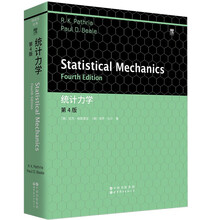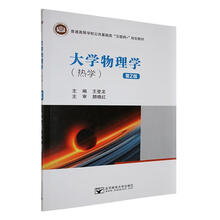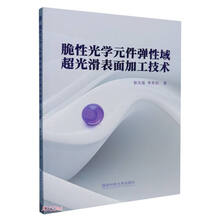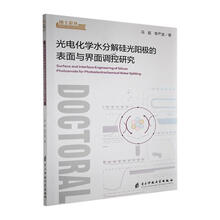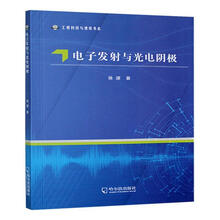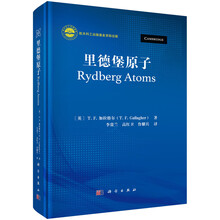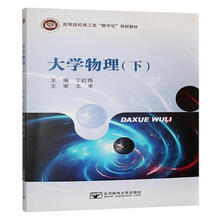Chapter 1 Basic Concepts
第1章 基本概念
1.1 Introduction
Precise definitions of the basic concepts form the foundation for the proper development of a subject. Fluid mechanics has a unique vocabulary associated with it, like any other science. In this chapter, some important basic concepts associated with fluid mechanics are discussed. The unit systems and the law of dimensional homogeneity that will be used are also reviewed. Careful study of these concepts will be of great value for understanding the topics covered in the following chapters.
1.2 Some Basic Facts About Fluid Mechanics
Fluid mechanics may be defined as the subject dealing with the investigation of the motion and equilibrium of fluids. It is one of the oldest branches of physics and foundation for the understanding of many essential aspects of applied sciences and engineering. It is a subject of enormous interest in numerous fields such as biology, biomedicine, geophysics, meteorology, physical chemistry, plasma physics, and almost all branches of engineering.
Nearly two hundred years ago, man thought of laying down scientific rules to govern the motion of fluids. The rules were used mainly on the flow of water and air to understand them so that people can protect themselves from their fury during natural calamities such as cyclone and floods and utilize their power to develop fields like civil engineering and naval architecture. In spite of the common origin, two distinct schools of thought gradually developed. On one hand, through the concept of “ideal fluid”, mathematical physicists developed the theoretical science, known as classical hydrodynamics. On the other hand, realizing that idealized theories were of no practical application without empirical correction factors, engineers developed the applied science from experimental studies, known as hydraulics, for the specific fields of irrigation, water supply, river flow control, hydraulic power, and so on. Further, the development of aerospace, chemical, and mechanical engineering during the past few decades, and the exploration of space from 1960s have increased the interest in the study of fluid mechanics. Thus, it now ranks as one of the most-important basic subjects in engineering science.
1.1 引言
对基本概念的准确定义是一个学科正确发展的基础。和其他学科一样,流体力学也有一个与之相关的专业术语表。本章讨论与流体力学有关的一些重要基本概念,并对书中所涉及的单位制及量纲一致性原理进行综述。认真学习这些基本概念对后续章节内容的理解至关重要。
1.2 流体力学概况
流体力学可以被定义为一门研究流体运动和平衡规律的学科。流体力学是物理学古老的分支之一,也是理解应用科学和工程学许多基本原理的基础。在生物学、生物医学、地球物理学、气象学、物理化学、等离子体物理学等众多领域,以及几乎所有的工程学分支领域,流体力学都是非常受关注的学科。
大约两百年前,人们想到建立科学的定律来掌握流体的运动。这些定律主要用来理解水和空气的流动规律,从而使人类能够保护自己免受飓风和洪水等自然灾害的侵袭,并利用这些自然动力来发展土木工程和海事工程。尽管起源相同,但两个截然不同的流体力学学派逐渐发展了起来。一方面,数学物理学家们通过“理想流体”这一概念发展了流体力学理论科学,即经典流体力学。另一方面,工程师认识到不经过经验修正,理想化的理论就不实用,于是通过实验研究发展出用于灌溉、给水、河流控制、水力等专业领域的流体力学应用科学,即水力学。此外,航空航天、化学工程和机械工程在过去几十年的发展,以及20世纪60年代以来人类对外太空的探索,都进一步激发了人们对流体力学的研究热情。因此,流体力学已经成为工程科学中重要的基础学科之一。
The science of fluid mechanics has been extended into fields like regimes of hypervelocity flight and flow of electrical conducting fluids. This has introduced new fields of interest such as hypersonic flow and magneto-fluid dynamics. In this connection, it has become essential to combine the knowledge of thermodynamics, heat transfer, mass transfer, electromagnetic theory and fluid mechanics, for the complete understanding of the physical phenomenon involved in any flow process.
Fluid mechanics is one of the rapidly growing basic sciences, whose principles find application even in daily life. For instance, the flight of birds in air and the motion of fish in water are governed by the fluid mechanics rules. The design of various types of aircraft and ships is based on the fluid mechanics principles. Even natural phenomena like tornadoes and hurricanes can also be explained by the science of fluid mechanics. In fact, the science of fluid mechanics dealing with such natural phenomena has been developed to such an extent that they can be predicted well in advance. Since the earth is surrounded by an environment of air and water to a very large extent, almost everything that is happening on the earth and its atmosphere are some way or the other associated with the science of fluid mechanics.
流体力学已经拓展到超高速飞行和导电流体流动等范畴,并衍生出新的研究领域,例如高超声速流动和磁流体动力学。在这种拓展和演变背景下,将热力学、传热学、传质学、电磁理论与流体力学知识相结合,已经成为全面理解任何一个流动过程物理现象必不可少的手段。
流体力学是快速发展的基础科学之一,其原理甚至可应用于日常生活中。例如,空中鸟儿的飞翔和水中鱼儿的游动都符合流体力学规律。各种飞机和船舶的设计也要遵循流体力学原理。甚至像飓风和台风这样的自然现象也能用流体力学来解释。事实上,与这些自然现象相关的流体力学学科已经发展到能够很好地预测这些自然现象的程度。由于地球的绝大部分是被空气和水所包围的,因此地球上及大气中发生的一切几乎都或多或少和流体力学相关。
The science of fluid motion is referred to as the mechanics of fluids, an allied subject of the mechanics of solids and engineering materials, and built on the same fundamental laws of motion. Therefore, unlike empirical hydraulics, it is based on the physical principles, and has close correlation with experimental studies which both compliment and substantiate the fundamental analysis, unlike the classical hydrodynamics which
展开

